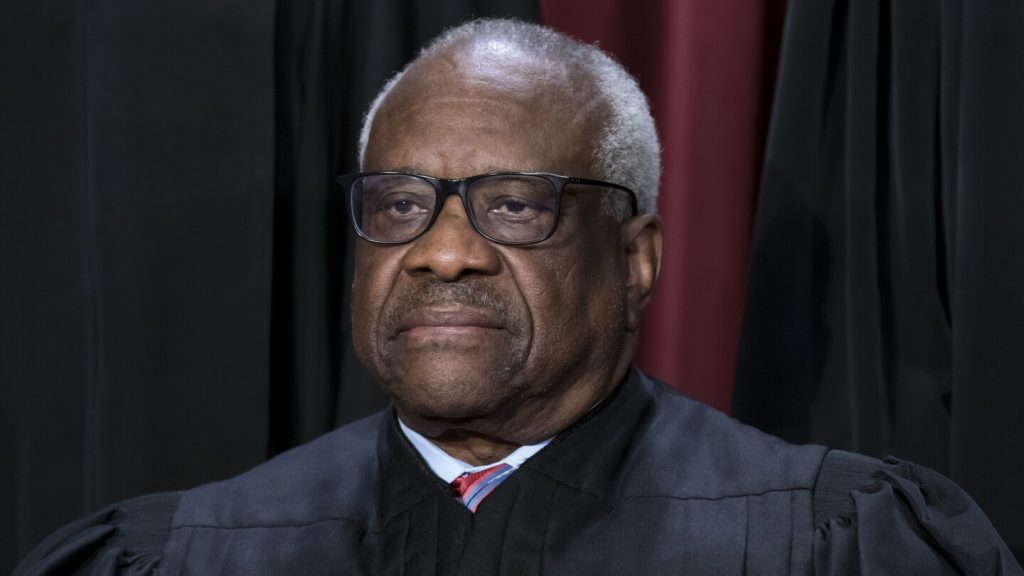Supreme Court Justice Clarence Thomas was unexpectedly absent from the court on Monday with no explanation provided. The 75-year-old justice did not participate remotely in arguments, as some justices have done in the past when they were unable to be present in person. Chief Justice John Roberts announced Thomas’ absence and stated that he would still be involved in the day’s cases based on the briefs and transcripts of the arguments. While the court sometimes announces when a justice is out sick, no reason was given for Thomas’ absence on this occasion. Thomas was hospitalized two years ago with an infection, which caused him to miss several court sessions, although he still participated in the cases during that time. As the longest-serving of the current justices, Thomas has been on the Supreme Court since 1991.
The unexpected absence of Justice Thomas from the Supreme Court on Monday raised questions and speculation about his health and well-being. Without any explanation provided for his absence, concerns have been raised about the potential reasons behind his non-participation in the court’s proceedings. Chief Justice John Roberts announced Thomas’ absence and assured that he would still be involved in the day’s cases based on the briefs and transcripts of the arguments, but the lack of information about his condition has led to uncertainty and speculation among observers. Thomas’ previous hospitalization two years ago for an infection has also been cited as a point of concern, as it raises the question of whether his current absence is related to a health issue.
As one of the longest-serving justices currently on the Supreme Court, Clarence Thomas has played a significant role in shaping the court’s decisions and legal interpretations over the past three decades. Appointed to the court in 1991, Thomas has been known for his conservative viewpoints and originalist approach to constitutional interpretation. His absence on Monday marked a rare occurrence for the justice, as he has typically been present and active in the court’s proceedings. With the court’s decisions often hanging on the balance of a single vote, Thomas’ absence could have implications for the outcomes of the cases being heard during his absence.
The Supreme Court’s decision-making process relies on the participation of all nine justices, making the absence of a justice a notable and potentially impactful event. When a justice is unable to be present for oral arguments, they can still review the briefs and transcripts of the cases and participate in the decision-making process remotely. Chief Justice Roberts’ announcement of Justice Thomas’ absence and his assurance that Thomas would still be involved in the day’s cases indicated that the court would proceed with its proceedings as scheduled. However, the lack of information about Thomas’ condition and the reasons behind his absence has left many wondering about the implications for the court’s decisions and the potential impact on the cases being heard.
Justice Clarence Thomas’ absence from the Supreme Court on Monday highlighted the fragility and uncertainty of the court’s operations, as well as the personal nature of the justices’ health and well-being. While the court is often viewed as a bastion of stability and authority, instances like Thomas’ unexpected absence serve as a reminder of the human element behind the justices’ decisions and actions. The speculation and concern surrounding Thomas’ absence underscore the importance of transparency and communication in ensuring public trust and confidence in the court’s proceedings. As one of the most influential and long-serving justices on the court, Thomas’ absence could have far-reaching implications for the court’s decisions and the legal landscape in the United States.


